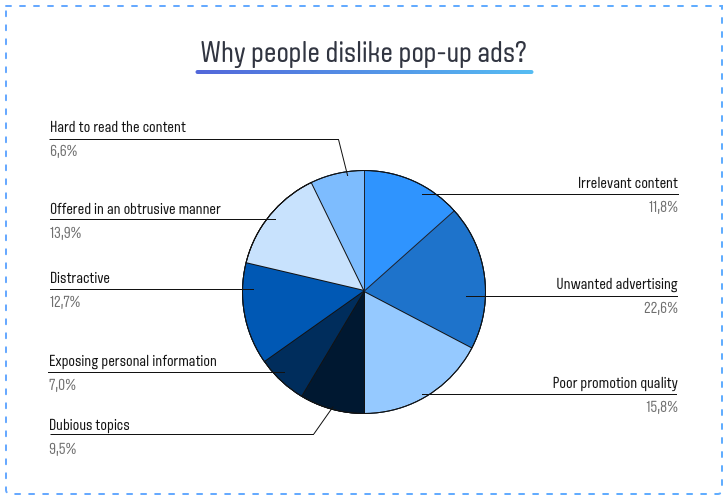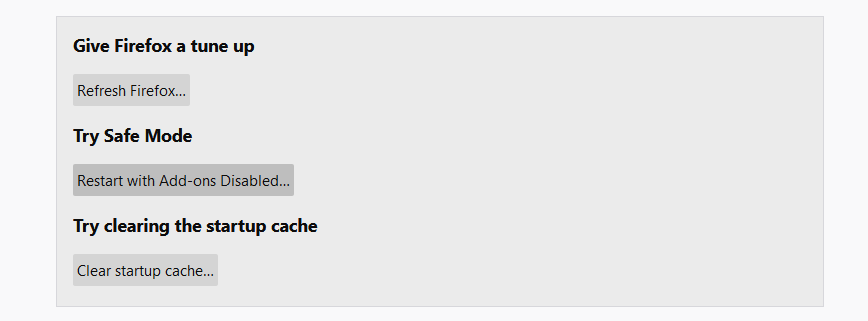Boostcomputerf1.click pop-ups appear out of the blue, detracting and irritating you. Nonetheless, that is way more than simple pop-ups – their nature is surely malignant, and they may introduce other malicious stuff to your PC. In this article, I will show you how to remove Boostcomputerf1.click pop-up advertisements and explain how to avoid them in the future.
Any interaction with Boostcomputerf1.click push notifications will be useless at best. At worst, the sites it can open may introduce malware to your system. These pop-ups can also advertise fake online shopping sites which will take your money and payment info. The latter generally ends up with losing all the money you have on the exposed card.
What are Boostcomputerf1.click pop-ups?
As the pop-up definition goes, these are short and small advertisements that attract your attention to a product they promote. But the difference between regular push notifications and Boostcomputerf1.click pop-ups is the malicious origins of the latter. Common pop-up ads are offered for you to enable with a understandable purpose – notify you about the latest articles, discounts and so on. It is a useful tool to help your site to keep visitor’s attention and help the interested ones to have the best deal.
Brief summary of the Boostcomputerf1.click pop-ups:
| Name | Boostcomputerf1.click |
| Hosting | AS14061 DigitalOcean, LLC Germany, Frankfurt am Main |
| IP Address | 46.101.99.53 |
| Malware type | Adware1 |
| Effect | Unwanted pop-up advertisements |
| Hazard level | Medium |
| Malware source | Apps from third-party websites, ads on dubious websites |
| Similar behavior | Fujitrk, Dergainisurvey, Captchagenius |
| Removal method | To remove possible virus infections, try to scan your PC |
Boostcomputerf1.click pop-up notifications, as opposed, have a deal with untrustworthy sites. You will generally see the proposition to enable them following the redirection from another website. There’s nothing bad in redirecting unless it throws you into such a questionable place. At that point, enabling pop-ups is served under the guise of the anti-bot check. Alternatively, the sites can deny showing you the contents unless you enable these push notifications. These theses should raise suspicion, as sites commonly feature a more convenient anti-bot mechanism. Witnessing this demand should be the reason to skip the site right away. Sometimes, even when you click “Allow”, you will not see the website – the only page it has is a landing page with the offer to turn on the pop-up ads.
How does it work?
The majority of web browsers support turning on pop-ups from sites. Websites, on the other hand, can send notifications with the content they like. It may be a promotion of the product published on this website, or an ad of the page of their partner. As a result, you can see the pop-up from site X, but clicking it will throw you to site Y – because a referral link to that website was added.
Cybercriminals rely on this feature in their approach to gain money using illegal advertising. They trick users into allowing the pop-ups, and after that just spread hundreds of promotions of other crooks they have a deal with. As you may suppose, no benevolent organisations will have a deal with fraudsters. All the Boostcomputerf1.click popups you can see lead to other untrustworthy sites. In some cases, the same victim can get into a trap of several pop-up spamming web pages, and its browser will turn into a complete mess.
The ads these crooks show are paid under the pay-per-view model. It usually provides a negligible payment for one view, but when you have a huge number of users and show them hundreds of ads every day – that is a much bigger sum. Even though most of such ads are ineffective, it can still give all the participants a lot of profit.
Are Boostcomputerf1.click push notifications dangerous?
Yes, they are. Initially, they can look safe – just a blinking pop-up that appears a couple times in an hour. However, the things this window promotes differ drastically from what you generally see in pop-up advertisements. Boostcomputerf1.click web page is ruled by crooks, who intentionally spread hundreds and thousands of irrelevant ads in pop-ups. They also don’t follow any common sense and can make sporadic pop-up ads into a hurricane of promotions. For weak systems, that may be enough to cause performance issues. But problems are not over at this point.

As with any other thing that touches illegal advertising, Boostcomputerf1.click pop-up advertisements do not contain any legit deals to offer. Even when crooks make the banners similar to ones from well-known retailers, the site these banners will throw you to are completely different. And these pages may offer you to turn on other pop-ups, install a “useful” program, or pay for a thing at a big discount and never receive it. Let’s leave aside the cases when pop-up notifications promote phishing pages or straightforward malware. There’s no way these pages will bring you any good, thus interacting with them is a very bad idea. For the same reason, Boostcomputerf1.click push notifications are not recommended to click on either, and the best solution is to disable them as soon as possible.
How to remove Boostcomputerf1.click pop-ups?
Fortunately, Boostcomputerf1.click pop-up notifications removal is not very complicated. They sit in the web browser and can’t conceal themselves in the system. However, as I stated above, some pop-up notifications can deliver malicious programs to your system. It is hard to predict all cases, and manual attempts to remove malware is a poor idea. Therefore, after getting rid of the pop-ups it is recommended to use anti-malware software. I’d especially recommend that if you have never allowed pop-up notifications, but they still appeared. This situation can point at malicious software activity. GridinSoft Anti-Malware will be the best both system recovery and malware scanning purposes, thanks to its system recovery functionality and multi-layer detection system.
First and foremost, you should reset your browser settings. You can do that in both manual and automatic manner. The former, obviously, requires more time to complete and can be somewhat complicated if you have never done that. Automated supposes the use of anti-malware programs that can reset all browser settings at once.
Reset your browsers with GridinSoft Anti-Malware
To reset your browser with GridinSoft Anti-Malware, open the Tools tab, and click the “Reset browser settings” button.

You may see the list of options for each browser. By default, they are set up in a manner that fits the majority of users. Press the “Reset” button (lower right corner). In a minute your browser will be as good as new.

The browser reset is recommended to perform through the antivirus tool by GridinSoft, because the latter is also able to reset the HOSTS file without any additional commands.
Reset your browsers manually
Manual method of browser reset
To reset Edge, do the following steps:
- Open “Settings and more” tab in upper right corner, then find here “Settings” button. In the appeared menu, choose “Reset settings” option:
- After picking the Reset Settings option, you will see the following menu, stating about the settings which will be reverted to original:


For Mozilla Firefox, do the next actions:
- Open Menu tab (three strips in upper right corner) and click the “Help” button. In the appeared menu choose “troubleshooting information”:
- In the next screen, find the “Refresh Firefox” option:


After choosing this option, you will see the next message:

If you use Google Chrome
- Open Settings tab, find the “Advanced” button. In the extended tab choose the “Reset and clean up” button:
- In the appeared list, click on the “Restore settings to their original defaults”:
- Finally, you will see the window, where you can see all the settings which will be reset to default:



Opera can be reset in the next way
- Open Settings menu by pressing the gear icon in the toolbar (left side of the browser window), then click “Advanced” option, and choose “Browser” button in the drop-down list. Scroll down, to the bottom of the settings menu. Find there “Restore settings to their original defaults” option:
- After clicking the “Restore settings…” button, you will see the window, where all settings, which will be reset, are shown:


When the browsers are reset, you need to ensure that your browser will connect the right DNS while connecting to the web page you need. Create a text file titled “hosts” on your pc’s desktop, then open it and fill it with the following lines2:
# Copyright (c) 1993-2006 Microsoft Corp.
#
# This is a sample HOSTS file used by Microsoft TCP/IP for Windows.
#
# This file contains the mappings of IP addresses to host names. Each
# entry should be kept on an individual line. The IP address should
# be placed in the first column followed by the corresponding host name.
# The IP address and the host name should be separated by at least one
# space.
#
# Additionally, comments (such as these) may be inserted on individual
# lines or following the machine name denoted by a '#' symbol.
#
# For example:
#
# 102.54.94.97 rhino.acme.com # source server
# 38.25.63.10 x.acme.com # x client host
# localhost name resolution is handle within DNS itself.
# 127.0.0.1 localhost
# ::1 localhost
Find the hosts.txt file in C:/Windows/System32/drivers/etc directory. Rename this file to “hosts.old.txt” (to distinguish it from the new one), and then move the file you created on the desktop to this folder. Remove the hosts.old from this folder. Now you have your hosts file as good as new.
Scan your system for possible viruses
After removing the Boostcomputerf1.click push notifications, it’s time to see if these pop-ups brought any threat to your system. Launch GridinSoft Anti-Malware, and then click on Standard scan. It will be enough in most cases to find and remove malware. The scan will last 5-10 minutes; you are free to use your system during that process.

Once the scan is complete, you will see the detections or a notification about a clean system. Proceed with pressing the Clean Up button (or OK when nothing is detected).

How to Remove Boostcomputerf1.click Pop-ups?

Name: Boostcomputerf1.click
Description: Boostcomputerf1.click - a lot of users became a target for the pop-up advertisements. I have a lot of friends who literally bombed me with the questions like “how to remove Boostcomputerf1.click push notifications?” or “why do Boostcomputerf1.click pop-ups keep appearing on Chrome even after AdBlock installation?”. In this article we will show you how to deal with Boostcomputerf1.click pop-ups, which may corrupt your browser’s correct performance, and create a lot of troubles while you are working.
Operating System: Windows
Application Category: Adware
User Review
( votes)References
- More about this malware type on GridinSoft Encyclopedia.
- Official Microsoft guide for hosts file reset.





